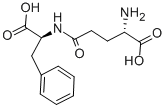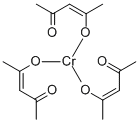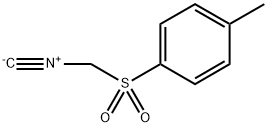BETA-GLUCOSIDASE
Synonym(s):β-D -Glucoside glucohydrolase
- CAS NO.:9001-22-3
- Empirical Formula: NULL
- Molecular Weight: 0
- MDL number: MFCD00130628
- EINECS: 232-589-7
- SAFETY DATA SHEET (SDS)
- Update Date: 2024-12-18 14:07:02
What is BETA-GLUCOSIDASE?
The Uses of BETA-GLUCOSIDASE
β-Glucosidase is a lysosomal enzyme which breaks β1->4 bonds that link oligosaccharides. β-Glucosidase is used to study Gaucher disease and potential treatments such as enzyme replacement therapy .
The Uses of BETA-GLUCOSIDASE
β-glucosidase is also used in the synthesis of glucosides and fucosides with various potential applications in pharmaceutical, cosmetic and detergent industries 1 , hydrolytic removal of aglycone moiety from flavonoid and isoflavonoid glycosides 2 , flavor enhancement of fruit juices and wine 3 , and biosynthesis of oligosaccharides.
The Uses of BETA-GLUCOSIDASE
β-Glucosidase from almonds has been used:
- in enzyme inhibition studies by 1,5-dideoxy-1,5-imino-d-xylitol(DIX) derivates
- as a control in for comparison of soybean isofavone glycosides degradation by β-Glucosidase from Talaromyce leycettanus
- as a medium component during saccharification and fermentation of yeast
General Description
β-Glucosidase from almonds belongs to the family 1 of the glycoside hydrolases. Almonds contain prunasin hydrolases (PH) and amygdalin hydrolase. Nine types of PHs are associated with almonds. PHs have signal peptide sequence and correspond to molecular weight in the range 50 to 75 kDa. PHs also have ITENG, NEP and INKKGIEYY motifs conserved and have N-glycosylation sites.
Flammability and Explosibility
Not classified
Biochem/physiol Actions
Prunasin hydrolase (PH) is a β-glucosidase that degrades prunasin to mandelonitrile and glucose. Amygdalin hydrolase hydrolyzes amygdalin to prunasin and glucose. β-Glucosidase is mesostable and is sensitive to temperature at 60 °C and above. It is highly sensitive to high pressure.
Properties of BETA-GLUCOSIDASE
| vapor pressure | 0.004Pa at 25℃ |
| storage temp. | 2-8°C |
| form | powder |
| color | gray-brown |
| CAS DataBase Reference | 9001-22-3 |
| EPA Substance Registry System | Glucosidase, .beta.- (9001-22-3) |
Safety information for BETA-GLUCOSIDASE
| Signal word | Danger |
| Pictogram(s) |
 Health Hazard GHS08 |
| GHS Hazard Statements |
H334:Sensitisation, respiratory |
| Precautionary Statement Codes |
P261:Avoid breathing dust/fume/gas/mist/vapours/spray. P342+P311:IF experiencing respiratory symptoms: call a POISON CENTER or doctor/physician. |
Computed Descriptors for BETA-GLUCOSIDASE
BETA-GLUCOSIDASE manufacturer
New Products
(S)-3-Aminobutanenitrile hydrochloride 4-Methylphenylacetic acid N-Boc-D-alaninol N-BOC-D/L-ALANINOL Tert-butyl bis(2-chloroethyl)carbamate 3-Morpholino-1-(4-nitrophenyl)-5,6-dihydropyridin- 2(1H)-one Furan-2,5-Dicarboxylic Acid Tropic acid 1-Bromo-3,5-Di-Tert-Butylbenzene S-2-CHLORO PROPIONIC ACID ETHYL ISOCYANOACETATE 2-Bromo-1,3-Bis(Dimethylamino)Trimethinium Hexafluorophosphate 4-IODO BENZOIC ACID 3-NITRO-2-METHYL ANILINE 1-(2,4-DICHLOROPHENYL) ETHANAMINE (2-Hydroxyphenyl)acetonitrile 4-Bromopyrazole 2-(Cyanocyclohexyl)acetic acid 4-methoxy-3,5-dinitropyridine 1-(4-(aminomethyl)benzyl)urea hydrochloride 2-aminopropyl benzoate hydrochloride diethyl 2-(2-((tertbutoxycarbonyl)amino) ethyl)malonate tert-butyl 4- (ureidomethyl)benzylcarbamate Ethyl-2-chloro((4-methoxyphenyl)hydrazono)acetateRelated products of tetrahydrofuran








You may like
-
 B-Glucosidase ex. Sweet Almonds (Type 2B) CAS 9001-22-3View Details
B-Glucosidase ex. Sweet Almonds (Type 2B) CAS 9001-22-3View Details
9001-22-3 -
 β-Glucosidase from almonds CAS 9001-22-3View Details
β-Glucosidase from almonds CAS 9001-22-3View Details
9001-22-3 -
 β-Glucosidase from almonds CAS 9001-22-3View Details
β-Glucosidase from almonds CAS 9001-22-3View Details
9001-22-3 -
 β-Glucosidase from almonds CAS 9001-22-3View Details
β-Glucosidase from almonds CAS 9001-22-3View Details
9001-22-3 -
 1975-50-4 98%View Details
1975-50-4 98%View Details
1975-50-4 -
 2-HYDROXY BENZYL ALCOHOL 98%View Details
2-HYDROXY BENZYL ALCOHOL 98%View Details
90-01-7 -
 14714-50-2 (2-Hydroxyphenyl)acetonitrile 98+View Details
14714-50-2 (2-Hydroxyphenyl)acetonitrile 98+View Details
14714-50-2 -
 118753-70-1 98+View Details
118753-70-1 98+View Details
118753-70-1